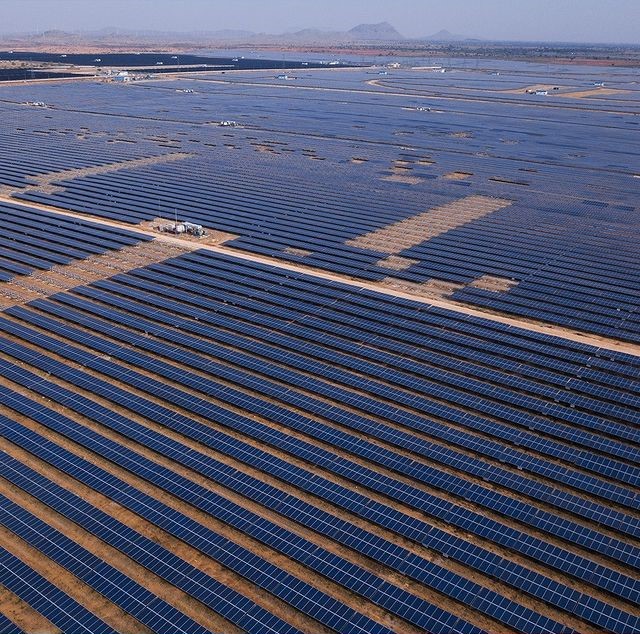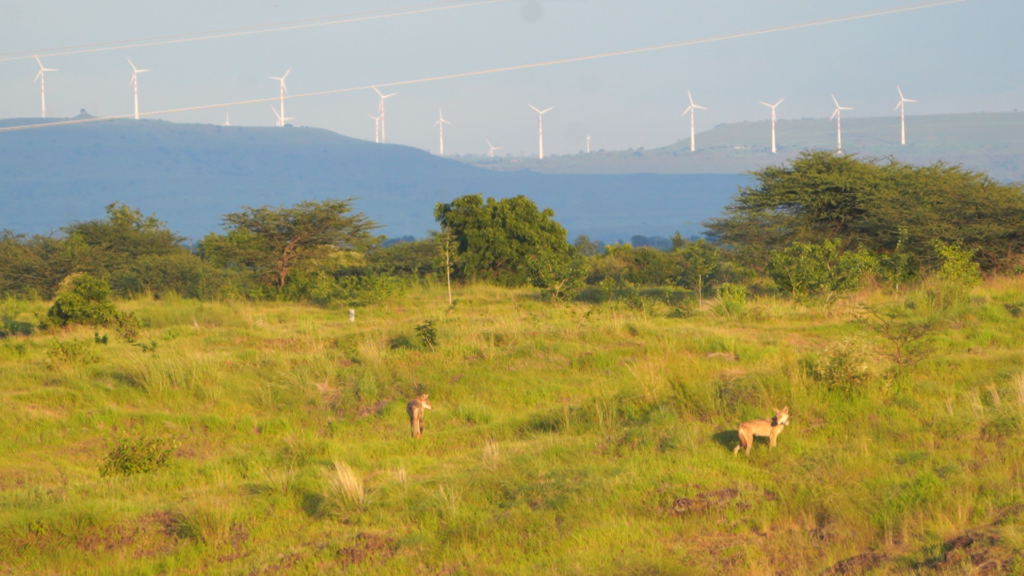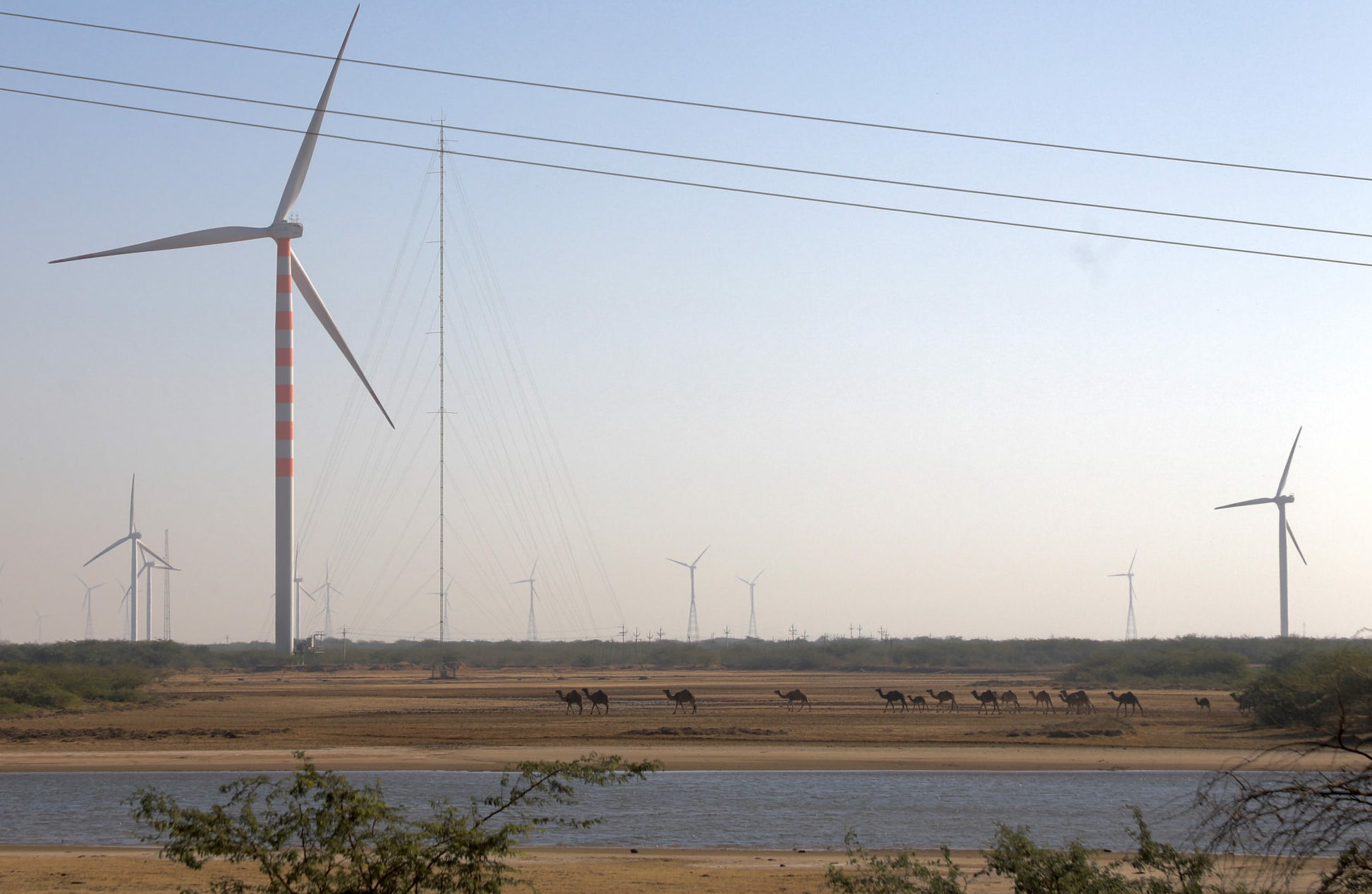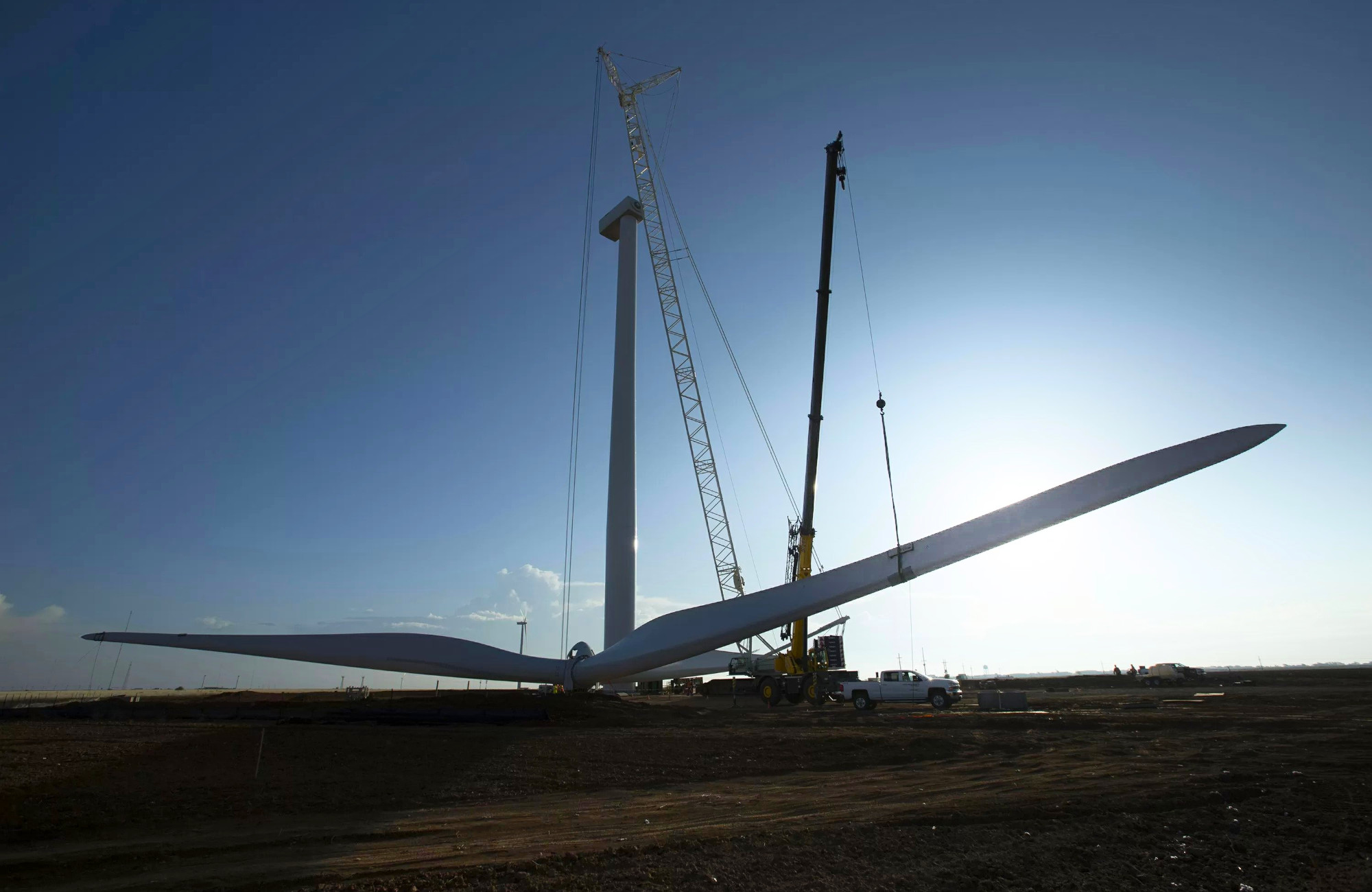In 2018, the Prime Minister of India Narendra Modi was honoured with the United Nations’ Champions of the Earth Award for leadership on climate action and environmental protection. A key factor behind this decision was the Prime Minister’s ambition to decarbonise India’s growing energy needs, setting a target of 500 gigawatts (GW) of renewable energy by 2030.
Further bolstering this commitment, India has set bold targets under the Paris Agreement for about 50% of its power to come from non-fossil fuel energy by the same year. These are not just empty promises. In the last ten years alone, India’s renewable energy sector has boomed, with the addition of a cumulative capacity of ~96300 megawatts (MW) of energy from renewable sources.
Wind and solar power are undeniably cleaner than conventional fossil fuel-derived energy, but the land footprint of these energy sources is several times greater. The median land footprint of wind projects have been estimated at 12,000 hectares per terrawatt hours per year, while for natural gas this figure stands at 1,900 ha/TWh/year. A study by the Institute for Energy Economics and Financial Analysis indicates that in order to achieve net-zero through solar and wind energy, India would require at least 5 million hectares of land for solar plants and between 1.5 million – 2 million ha for wind farms. For solar plants this translates to 1.7-2.5% of India’s total landmass.
India has turned to an old colonial policy to find land that can be converted to renewable energy parks. The 17th-century British philosopher John Locke’s Two Treatises, postulated that any land that was not cultivated or was being used for a common purpose was lying waste. Thus came the idea of “wastelands” – supposedly barren, desert-like lands with little productive use other than for livestock grazing. This was anathema to the colonial British government, and large swathes of grazing common lands in India were converted to agriculture. Seventy-five years after Independence, the Government of India continues to rely on this colonial outlook, and every few years it produces a Wasteland Atlas of India, classifying a staggering 17% of the country as wastelands.
These lands, characterised by open savannas, scrublands, deserts and rocky outcrops, are collectively called Open Natural Ecosystems. Commonly found in central and western India, these areas support plants and animals uniquely adapted to harsh conditions. Millions of people also call these “wastelands” home. Pastoralism, whereby people migrate with their households and livestock between summer and winter pastures, is the primary form of livelihood here with around 25 nomadic pastoralist communities dependent on these landscapes.
In states with the largest Open Natural Ecosystems, such as Gujarat, Rajasthan, Tamil Nadu, Maharashtra and Karnataka, the Government of India sees an opportunity to realise its renewable energy dreams. State-level energy policies actively prioritise wastelands for conversion since they are easy to acquire, are often common land and do not come under the purview of land acquisition laws such as the 2013 Land Acquisition, Rehabilitation and Resettlement Act.
An ambitious project in this regard is the Khavda Renewable Energy Project in the Kutch District of Gujarat, which is set to be the world’s largest hybrid renewable energy project. The total land area allotted to the project is 72,400 ha, comparable to the size of Singapore. 2.4 million solar modules have already been installed at the site, and by the time it is completed the complex is expected to power over 16 million homes and generate 30GW of power every year.

The Khavda RE Project is being set up in the Rann of Kutch, a vast area of salt marshes in the Thar Desert. The site was identified under the Government Waste Land Allotment Policy for Wind/Solar, and deemed suitable under the Gujarat Solar Energy Policy, which explicitly picks out wastelands that can be used for “more productive purposes” and “socio-economic development”. The conversion of vast swathes of the Thar Desert for such a large-scale project will inevitably disturb the area’s soil composition, release stored carbon into the atmosphere, create hazards for wildlife, and restrict areas used by pastoralists for grazing or migration.
The land for the Khavda RE Project has been allotted to six developers, two of which are private corporations, while the rest are government-owned companies. The Adani Green Energy Four Limited group has the largest allotted land area. It is also the only company that has carried out an Environmental Impact Assessment (EIA) in compliance with international business norms. The EIA report states that the ecological impact will be moderate during the construction phase and high during the operation phase. It highlights the impact on birds as particularly significant, with the site elevating the risk of collision and electrocution. Open Natural Ecosystems are essential habitats for birds, whose migratory and breeding patterns may be disrupted by such large-scale renewable energy projects. The other developers, whose share of the project’s land area is more than 60%, have either not carried out an EIA or have not made their report publicly available.
To promote renewable energy projects, India exempted them from review under the 2006 Environment Impact Assessment Notification, which mandates EIAs under the 1986 Environmental (Protection) Act. The Ministry of Environment, Forests and Climate Change has also classified wind and solar photo-voltaic projects as White Category industries, which are exempt from obtaining Consent to Operate from the relevant State Pollution Control Board.

Without the requirement for an EIA, public consultations (as mandated under the 2006 notification) are not always carried out. This is a challenge for pastoralists in Open Natural Ecosystems. While large-scale projects may not be set up in or near settled villages, they may disrupt the migratory routes of mobile pastoralists, particularly when the project covers such a large area of land. Public consultations are crucial to fully understand the potential social impact of these projects, since assessing the distance of villages and settlements from the project site only offers a partial picture.
As the renewable energy sector continues to grow, EIAs will become increasingly important in understanding the ecological, environmental, and social impacts that renewable energy projects can have on the lands on which they are situated. Renewables are undeniably key to reducing global carbon emissions, but the trade-offs between preserving existing natural ecosystems and setting up industrial scale energy projects must be carefully considered on a case-by-case basis. Given that certain areas of Open Natural Ecosystems support higher levels of biodiversity and carbon sequestration than others, a prioritisation exercise determining which sites are most suited to the development of renewable energy projects would help ensure the most valuable landscapes are protected.
A reclassification of Open Natural Ecosystems is similarly essential. The Government must reconfigure the Wasteland Atlas and recognise these landscapes as unique ecosystems. The emphasis on large-scale energy projects for decarbonisation must be balanced with the need to protect and conserve existing natural ecosystems that contribute significantly to the sustenance of communities and their livelihood, as well as ecological heritage and health.
Sanjana Nair is a Policy Analyst at the Centre for Policy Design at the Ashoka Trust for Research in Ecology and the Environment (ATREE) in Banglore, India. Her research interests include environmental law and policy, land management and ecosystem restoration.
Dr. Abi T. Vanak is the Director of the Centre for Policy Design and a Senior Fellow at ATREE. He is a conservation biologist and animal ecologist and has helped create created an open source map of semi-arid open natural ecosystems in India.
Further reading:

- Opinion
- By Patrick Moriarty
- 14 July, 2023






